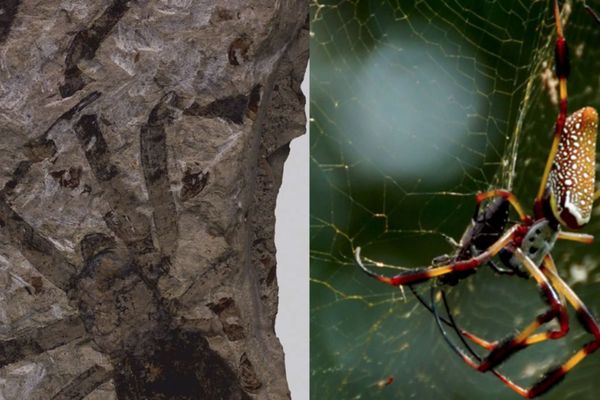Research a living fossil
Choose a living fossil, research its history, habitat, and adaptations, then create a simple illustrated report to present your findings.



Step-by-step guide to research a living fossil
What is a Fossil | Types of Fossils | How are Fossils formed | Educational video for Kids
Step 1
Choose a living fossil to research.
Step 2
Pick one reliable source to read such as a book webpage or encyclopedia.
Step 3
Read and write one sentence about the fossil's history on your paper.
Step 4
Read and write one sentence about the fossil's habitat on your paper.
Step 5
Read and write one sentence about the fossil's adaptations on your paper.
Step 6
Draw a simple picture of the fossil showing where it lives.
Step 7
Label two body parts or features on your drawing that help it survive.
Step 8
Make a short timeline of three events or time words about its history.
Step 9
Add a clear title and your name at the top of the report.
Step 10
Color and decorate your report to make it eye-catching.
Step 11
Use scissors and glue to attach any printed pictures or sticky notes onto the report.
Step 12
Practice explaining your report out loud in one minute.
Step 13
Share your finished creation on DIY.org.
Final steps
You're almost there! Complete all the steps, bring your creation to life, post it, and conquer the challenge!


Help!?
What can we use if we don't have a printer, scissors, glue, or sticky notes listed in the instructions?
If you don't have a printer, scissors, glue, or sticky notes, draw or photocopy pictures by hand, tear paper instead of cutting, use tape or a stapler instead of glue, and stick small folded paper notes onto the report.
What should we do if we can't find a reliable source or get stuck writing the one-sentence history, habitat, and adaptations?
Choose a trusted kid-friendly source like a library encyclopedia or a reputable webpage, highlight one clear fact about history, habitat, and adaptations, and then paraphrase each highlighted fact into the three required one-sentence entries on your paper.
How can we change the activity for younger children or make it more challenging for older students?
For younger kids, limit the work to one or two simple sentences with guided drawing and labeling, while older students can add citations, a more detailed three-event timeline with dates, and deeper adaptation explanations before decorating and sharing on DIY.org.
What are some ways to enhance or personalize the living fossil report beyond the basic instructions?
Make a habitat diorama or pop-up scene to show where it lives, compare it to an extinct relative on the timeline, add personalized decorations around the clear title and drawing, and record your one-minute explanation as a video to upload to DIY.org.
Watch videos on how to research a living fossil
What are Fossils? Science For Kids
Facts about fossils and paleontology
🌳 Ginkgo biloba is often called a living fossil because its leaf form has changed little in over 200 million years.
🦀 Horseshoe crab blood is blue and is used by medicine-makers to test vaccines and medical devices for bacteria.
🐚 The chambered nautilus uses gas-filled shell chambers to adjust buoyancy—like a natural submarine.
🐟 The coelacanth was thought extinct for about 66 million years until a living one was found in 1938.
🦎 The tuatara, native to New Zealand, has a light-sensitive 'third eye' (parietal eye) visible in hatchlings.
How do I guide my child to research a living fossil and make an illustrated report?
What materials do we need to research a living fossil and create the report?
What ages is this living fossil research activity suitable for?
What are the benefits, safety tips, and variations for a living fossil research project?


One subscription, many ways to play and learn.
Only $6.99 after trial. No credit card required



